The Problem with Invisible Children’s “Kony 2012” – By Michael Deibert
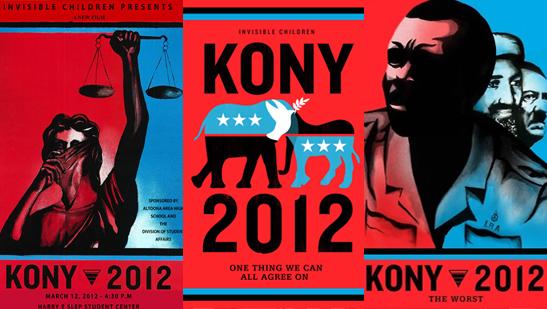
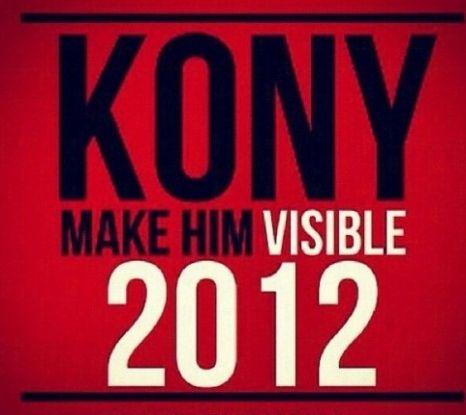 Recently, a new video produced by the American NGO Invisible Children focusing on Joseph Kony and the Lord’s Resistance Army (LRA) has been making the rounds. Having just returned from the Acholi region of Northern Uganda myself, where the LRA was born, I thought I might share some of my thoughts on the subject, for what they’re worth.
Recently, a new video produced by the American NGO Invisible Children focusing on Joseph Kony and the Lord’s Resistance Army (LRA) has been making the rounds. Having just returned from the Acholi region of Northern Uganda myself, where the LRA was born, I thought I might share some of my thoughts on the subject, for what they’re worth.
I think it is easy for Invisible Children and other self-aggrandizing foreigners to make the entire story of the last 30 years of Northern Uganda about Joseph Kony, but there is a history of the relationship between the Acholi people from whom the LRA emerged and the central government in Kampala that is a little more complicated than that.
Kony is a grotesque war criminal, to be sure, but the Ugandan government currently in power also came to power through the use of kadogo (child soldiers) and fought alongside militias employing child soldiers in the Democratic Republic of Congo, something that Invisible Children seem wilfully ignorant of.
The conflict in Acholi — the ancestral homeland of the ethnic group who stretch across northern Uganda and southern Sudan – has its roots in Uganda’s history of dictatorship and political turmoil. A large number of soldiers serving in the government of dictator Milton Obote (who ruled Uganda from April 1965-January 1971 and then again from December 1980-July 1985) came from across northern Uganda, with the Acholis being particularly well represented, even though Obote himself hailed from the Lango ethnic group. When Obote was overthrown by his own military commanders, an ethnic Acholi, General Tito Okello, became president for six chaotic months until Yoweri Museveni’s National Resistance Army took over. Museveni became president, and has since remained so, via elections — some legitimate, some deeply flawed.
Upon taking power, the Museveni government launched a brutal search and destroy mission against former government soldiers throughout the north, which swept up many ordinary Acholi in its wake. Some Acholi began mobilizing to defend themselves, first under the banner of the Uganda People’s Democratic Army (largely made up of former soldiers) and then the Holy Spirit Movement.
This movement, directed by Alice Auma, an Acholi who claimed to be acting on guidance from the spirit Lakwena, brought a mystical belief in their own invincibility that the soldiers of the Kampala-based government at first found terrifying: Holy Spirit Movement devotees walked headlong into blazing gunfire singing songs and holding stones they believed would turn into grenades. The movement succeeded in reaching Jinja, just 80km from the capital Kampala, before being decimated by Museveni’s forces.
Out of this slaughter was born the Lord’s Resistance Army (LRA), led by Joseph Kony, a distant relative of Alice Auma. Kony added an additional element of targeting civilian Acholi to his schismatic blend of Christianity, frequently kidnapping children and adolescents to serve in his rebel movement. The Museveni government responded by viewing all Acholi as potential collaborators, rounding them up into camps euphemistically called “protected villages”, where they were vulnerable to disease and social ills, and had few ways to carry on their traditional farming.
The LRA’s policy of targeting civilians (though not the Museveni government’s draconian measures) eventually drew international condemnation and in 2005 the International Criminal Court issued arrest warrants against Joseph Kony and several other seniors LRA commanders for crimes against humanity and war crimes. Ironically, one of those commanders, Dominic Ongwen, was himself kidnapped by the LRA while still a small boy.
After peace talks between the LRA and the Ugandan government collapsed in 2007, the group decamped from its bases in southern Sudan to the Democratic Republic of Congo and the Central African Republic.
Following the end of negotiations, the Museveni government launched its Peace Recovery and Development Plan (PRDP), an effort to stabilize northern Uganda after years of war. Since then, according to the United Nations 98% of internally displaced persons have moved on from the camps that once sheltered hundreds of thousands of frightened people.
Despite criticisms from the Acholi that the government’s program has been insufficient, local initiatives and the work of some foreign organizations have helped restore a sense of normality and gradual progress to the region, with people returned to their homes and travel between once off-limits parts of the region now facilitated with relative ease.
Now a thousand miles from the cradle of their insurgency, the LRA would appear to have little hope of returning to Uganda, though their potential to wreak havoc on civilians remains little diminished. In Congo’s Haut-Uele province, between December 2008 and January 2009, the LRA massacred 620 civilians and abducted more than 160 children; and a year later they returned and killed 321 and abducted another 250 people in December 2009.
In October 2011, U.S. President Barack Obama announced that he was sending 100 Special Forces soldiers to help the Ugandans hunt down Kony. By the end of the year, the Ugandan army confirmed that the troops had moved along with the Ugandan army to Obo in the Central African Republic and Nzara in South Sudan.
The problem with Invisible Children’s whitewashing of the role of the government of Uganda’s president Yoweri Museveni in the violence of Central Africa is that it gives Museveni and company a free pass, and added ammunition with which to bludgeon virtually any domestic opposition, such as Kizza Besigye and the Forum for Democratic Change.
By blindly supporting Uganda’s current government and its military adventures beyond its borders, as Invisible Children suggests that people do, Invisible Children is in fact guaranteeing that there will be more violence, not less, in Central Africa.
I have seen the well-meaning foreigners do plenty of damage before, so that is why people understanding the context and the history of the region is important before they blunder blindly forward to “help” a people they don’t understand.
U.S. President Bill Clinton professed that he was “helping” in the Democratic Republic of Congo in the 1990s and his help ended up with over 6 million people losing their lives.
The same mistake should not be repeated today.
Michael Deibert is a Visiting Fellow at the Centre for Peace and Reconciliation Studies at Coventry University and the author of the forthcoming Democratic Republic of Congo: Between Hope and Despair (Zed Books).
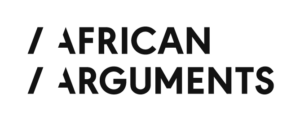


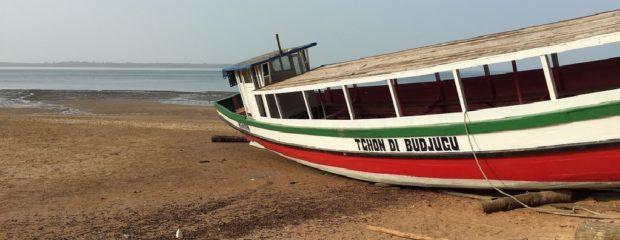
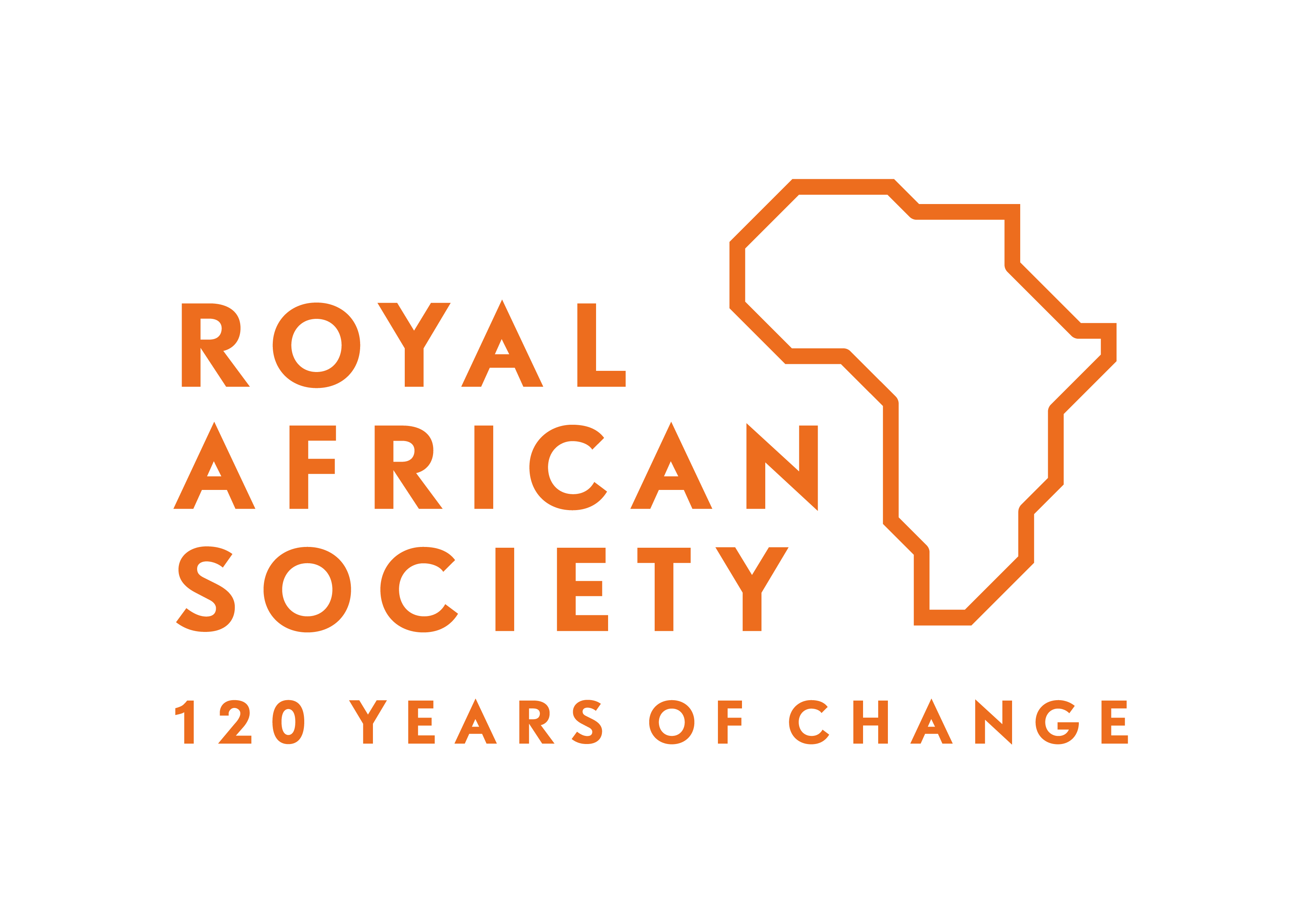

So what do You propose? Do nothing? It’s always easy to criticize. Why don’t You propose a better solution?
I was journalist in East Africa covering the LRA conflict since 1999-2004 and since 2005 I’ve been researching the LRA peace process with several field trips to Gulu. While Michael Deibert correctly chronicles the history of Uganda’s political conflicts, he has totally twisted its relevance and implications in relation to the Invisible Children Campaign. The logic that by targeting Kony and the LRA, the campaign is in effect giving a pass and thus legitimizing the actions of the Museveni regime is flawed and deliberately misleading.
The two positions (targeting Kony and allegedly sanitising Museveni) are not mutually exclusive. While the Ugandan military has indeed committed atrocities in the past against the Acholi and continues to perpetrate injustices in the North, the pervasiveness, brutality and extent of Kony’s atrocities are unprecedented and appalling in their own right. The prospect of the LRA perpetrating the same crimes in the DRC and central African Republic is a prospect that should not be allowed to continue. For more than 20 years, the Ugandan government’s dual approach of pursuing peace while waging war against the LRA has not worked. The LRA on the other hand, has proven insincere and uncommitted to peace. The African Union and other sub-regional organizations on the continent have totally ignored the LRA menace. If galvanizing the international community will make the difference between impunity and ending decades of conflict, this is definitely worth our support.
Instead of making utterly false predictions based on illogical analysis that the campaign risks renewing or prolonging the conflict, a more comprehensive risk-analysis should provide viable alternatives instead of peddling cynical critiques that are false and counter productive.
[…] vulnerable to disease and social ills, and had few ways to carry on their traditional farming. Read more… Share this:ShareTwitterFacebookLike this:LikeBe the first to like this post. This entry was […]
What I find interesting about this whole thing is the alarming rate at which my fellow classmates jump up to pledge to help a organization they aren’t familiar with, let alone help a people they don’t know or understand. The creators of the KONY 2012 campaign are brilliant in their use of propaganda and bias alongside the combining and leaving-out of facts. Emotional appeal has got to be the best way to achieve blind faith, or “sheep” if I may.
I’ve written a short piece about KONY 2012 at the url below. I welcome any comments on this.
http://theafricanist.blogspot.co.nz/
The real fundamental issue of most salient concern is that of NGO self promotional aggrandizement at the expense of the vulnerable who exist as mere ‘totems’. This NGO represents what is most corrosive in the advancement of prescriptive social assistance as I strongly suspect the majority of the funding did not go into the field but rather was used for HQ use in order to create this video which in several elements is factually incorrect insofar as the video distorts the truth in order to promote astringent angst which is counter to the political public nuance grounding the verity of The LRA; which was at one moment in time a decade ago, an organization most strong in victim abuse and social terror. Today the LRA is a shadow which in no manner mitigates the accountability of LRA Leader Kony who must be held to severe strict account for actions committed under the aegis of LRA.
Many NGO’s generate more harm than contributing to the public good as these NGO’s exist primarily to support the lifestyle and interests of a few who enjoy a most excellent expat life style while adding marginal social civic utility if at all to the social redactive assistance which to be grounded properly will require decades of long term prescriptive assistance relying primarily on local knowledge and local participation.
I have some thoughts and suggestions apropos of Josh Maiyo’s comments and others here.
How Invisible Children’s Kony 2012 Will Hurt – And How You Can Help – Central Africa
http://www.huffingtonpost.com/michael-deibert/how-invisible-childrens-k_b_1334410.html
Please share as you see fit.
All best,
MD
[…] and writer who founded the human security Think Tank, Fanaka Kwawote based in Kampala, and “The Problem with Invisible Children’s ‘Kony 2012′” by Michael Deibert, a Visiting Fellow at the Centre for Peace and Reconciliation Studies at […]
[…] The problem with Invisible Children’s “Kony 2012″ (Michael Deibert, African Arguments, African Royal Society) […]
I have to ask myself what is behind this event, Kony is a nightmare that had been there for the last 20 years, to come out now and trivialize it,appealing to the emotions of people using propaganda and not been truthful in their account of reality, appealing to celebrities to get a bigger pull one star wondering..what is really going on?
[…] -The Problem with Invisible Children’s “Kony 2012″, de Michael Deibert (Royal African Society): https://africanarguments.org/2012/03/08/the-problem-with-invisible-childrens-kony-2012-by-michael-dei… […]
This article is misinformed and it doesn’t appear that the author did much research on Invisible Children or this conflict, as some of the facts are twisted and skewed. Invisible Children created a 29 minute video to highlight a human issue and compel the world to do something to shape human history in a positive way. How do you adequately fit 26 years of war, or 9 years of an organization’s history, into a 29 minute film and tell a complete story? KONY 2012 is a snippet of the war and of IC’s history, a moving snippet that can empower people to move in a positive direction, to act on behalf of humanity. To me, that is worth some salt. I’m sure there are a lot of opinions on ways to reduce human suffering in northern Uganda and the regions of Central Africa that are currently inhabited by the LRA. My personal sentiment is that the work Invisible Children does in Central Africa is of the very highest legitimacy and impact. They’ve built an HF radio network that allows some of the most remote areas of the world a means to communicate and connect to security forces. They’ve had great success encouraging LRA defections through FM radio broadcasts and flyer ‘come home’ messaging. They’ve built a crisis tracker that maps LRA activity in near real-time, providing humanitarian organizations access to life-saving information that can assist them to best deploy their services. They have built and are currently operating the first rehabilitation center to service LRA-affected communities in DR Congo. This center is providing intensive counseling to LRA victims even as you read this. They are providing nearly 1,000 promising secondary and university students in northern Uganda scholarships and mentors. They have rebuilt eleven northern Ugandan partner schools that were damaged or destroyed by war, and they have implemented groundbreaking and high-impact microeconomic initiatives like Mend and the Village Saving and Loan Association that are spurring a local economy and creating livelihoods in a post-conflict region. To me, that is substantial. And now, they created a film that has been viewed by millions and millions of people, many of whom had never heard of Joseph Kony before. Invisible Children did not create or blindly support this issue. I urge you to take a closer look at the LRA Disarmament and Northern Uganda Recovery Act that passed through congress and was signed by Obama. Research what resolve.org, The Enough Project, and Human Rights Campaign, all organizations that have been following this issue for years, have to say. I’m well aware that this is a messy, complicated situation. But we can’t refuse to do anything because of this. If you have alternative suggestions, please raise them. But please remember that the reason why we are discussing this issue in the first place is this 29 minute video. I consider that a success. Awareness is powerful, and I believe in it completely as a means to shape a more just world.
*theresolve.org*
So, now we know where Uganda is. Invisible Children got the Internet world all a twitter with their KONY 2012 video. And the inevitable criticism came with it. 50 million people watched the Invisible Children video, and the critics bleated: this is as superficial as watching a kid on Youtube high on Novocain.
As someone teaching history in a public high school in San Diego County, I can tell you that California does not mandate my students know where Uganda is. It is not a State Standard in which all curriculums are based and standardized exams are written. Only the very last standard 10.10 states that students must: “…analyze recent incidents of nation building OF AT LEAST TWO of the following regions or countries: Middle East, Africa,, China, Latin America and or Mexico.†Africa (our second largest continent) is lumped with nations and regions. Here, all of Africa is legally dismissed as a region. Because of Invisible Children, now 50 million people know where Uganda is. And the harm in that is?
What I think everyone might reflect on is that however naive or exploitive Invisible Children may seem, and I emphasize “mayâ€, that misses the point.
As world citizens, we ought to know what Kony has done and is doing. The historical background of Kony and his relationship with Alice Auma is documented not just in the original Invisible Children video (2006), but extensively in other “traditional†media and news. Look. There were three college students who wanted to go to Darfur to find out what was going on during the famine and war. They became the founders of Invisible Children. It was that trip to Africa, where they went to find Darfur — and instead found the Acholi and the LRA in Uganda. That trip changed their lives. Their original film, and the organization itself, is called Invisible Children, not KONY 2012. The issue is about any children rendered “invisible†by the terror around them, and their hopeful recovery. Now, IC and KONY 2012 want to change our lives, by broadening the definition of community. That is bad because?
And still, Joseph Kony is out there.
Thus:
a) It stands to reason that someone ought to get Kony or he could just as well return;
b) If he is in the DRC, or South Sudan, should the world not know about what is going on there? If we follow Kony it will expose us to the crises there — ones that demand world attention (e.g., the impact of the exploitation of natural resources by foreign powers on native peoples – namely, oil for your car, coltan for your smart phone and diamonds for your ring).
c) The charge that the situation is more complicated than the KONY 2012 video is showing gets me the most. Climate change is complicated, unemployment and the situation in Syria is complicated. Are the critics claiming that since the issues are complicated, no one should simplify them because that would automatically be white washing, naïve or even racist? This criticism of IC’s KONY Internet campaign is, in essence, saying: “It is complicated, you kids would be best not to get involved. Move along — get back to Farmville or your Call of Duty. Nothing to see here.†No! It’s the other way around. The more complicated, the more we should be involved. Simplification does not ignore the complication; it opens the door to sophistication. The good news is that this discussion opens the forum to better understanding the issues of Central Africa, and of Africa as a whole.
The fact that the popularity and viewing of this video it occurred over night doesn’t have to mean it was superficial or a fraud or a prank, as some of my students assumed. This criticism comes from a misunderstanding of the technology. The Internet as a communication tool is a concept that the youth of the Arab world seem to have grasped. Though their journey is not over either. Should we have criticized, ignored, dismissed those videos in Spring of 2011 because they were oversimplifying the situation? Do we of those in Syria desperately trying to get their story out to the world? No.
Are we to use Facebook only for flash mobs? Please. Again, does anyone claim that Livestrong is bad because all it is is a rubber band? No, because it is not about rubber bands. It is about fighting cancer in men. Is AIDS awareness wrong since it is all based on a pin? No, it is about raising awareness and generating discussion in order to find a cure to HIV/AIDS.
KONY 2012 is about saving lives in Africa by empowering the youth of the world. The only ones threatened by that would be those in power. Do I need to end with a quote from Michael Jackson? Oh yeah, in 1985, he was trying to help Africa too. Free Nelson Mandela! How bourgeois the cynics bleated. At least I ask you to remember the last line of the song. That line can’t be wrong. It was a real Call of Duty.
[…] million dollars within its first 48 hours online; not to mention the whirlwind of opinions, for and against, that it has […]
[…] The Acholi are an ethnic group in northern Uganda. President Milton Obote (1966 to 1971 and 1980-1985) deployed many Acholi soldiers in his battles against rival politician Yoweri Museveni. Obote was overthrown by his own generals in 1985, and in January 1986 Yoweri Museveni and his National Resistance Army seized power. […]
Hi Rachel,
I recently returned from Northern Uganda, as a matter of fact, and I must say that I saw NO SIGN whatsoever of Invisible Children’s presence there and, in perhaps 50 interviews that I conducted and as many casual encounters and conversations, not a single individual or local group mentioned Invisible Children or their work in Uganda. Strange, no?
I would highly recommend that you listen to what the Ugandans themselves are saying about Invisible Children and the Kony 2012 campaign. A few articles/videos that I recommend:
7 March 2012
A Ugandan female blogger responds to Kony2012 campaign.
You Tube
http://youtu.be/KLVY5jBnD-E
9 March 2012
Former child soldier “totally disagrees with approach of military action as a means to end this conflict.”
National Geographic
http://newswatch.nationalgeographic.com/2012/03/09/kony-2012-a-view-from-northern-uganda/
12 March 2012
Kony2012: should have advocated for dialogue and not military option
The Acholi Times
http://www.acholitimes.com/index.php/perspectives/opinion/16-kony2012-should-have-advocated-for-dialogue-and-not-military-option
14 Mar 2012
Kony screening provokes anger in Uganda
Ugandans, who suffered at hands of Lord’s Resistance Army, react in anger at Kony video causing internet waves.
Al Jazeera
http://www.aljazeera.com/news/africa/2012/03/201231432421227462.html
15 March 2012
Uganda screenings of Kony film halted after protests
Agence France Presse
http://news.yahoo.com/uganda-screenings-kony-film-halted-protests-113858224.html
All best,
MD
[…] The problem with Invisible Children’s “Kony 2012″ (por Michael Deibert en African Arguments, de la African Royal […]
[…] at African Arguments, Coventry University’s Michael Deibert problematizes Invisible Children’s depiction of the relationship between Kony, the Acholi, and the Ugandan […]
[…] prochainement, intitulé DRC: Between Hope and Despair. Il a expliqué le problème dans un article de la Royal African Society: « En soutenant aveuglément l’actuel gouvernement de l’Ouganda et ses aventures militaires […]
cialis tablets cialis 20 mg
buy cialis online cialis pills